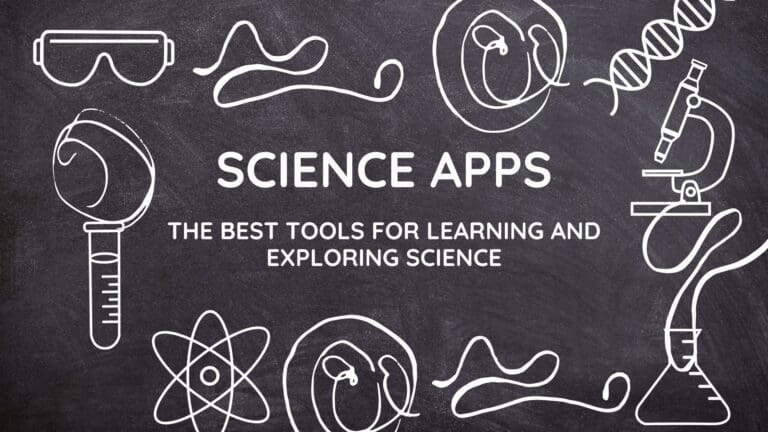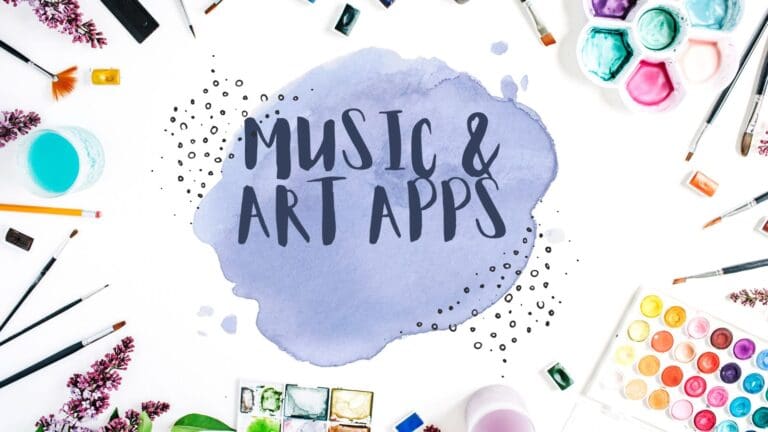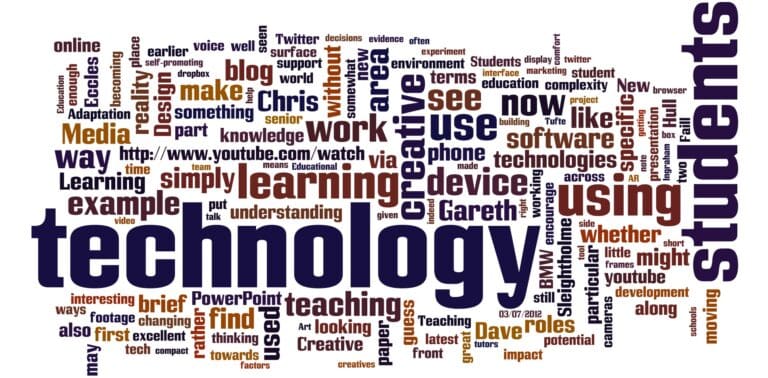30 Amazing Educational Virtual Field Trips: Explore the World from Your Classroom
Are you looking for a way to keep your kids engaged and learning during the pandemic? With many places closed and field trips canceled, finding new and exciting ways to keep your children engaged can be challenging. Fortunately, technology has made it possible for kids to visit all kinds of places without leaving their homes or classrooms.
Virtual field trips are an excellent way to provide children with a fun and educational experience. With just a computer and an internet connection, kids can explore all kinds of places, from national parks to museums to historical landmarks. These virtual field trips can help children learn about different cultures, history, science, and more. Plus, they can be a great way to break up the monotony of a regular school day and provide a fun and exciting activity for kids to look forward to.
In this article, we will introduce you to 30 amazing educational virtual field trips for kids. These virtual field trips will take your children to all kinds of places, from under the sea to outer space. Whether you’re a parent or a teacher, these virtual field trips are an excellent way to supplement your child’s education and provide them with a fun and engaging experience. So, sit back, relax, and let your children embark on a virtual adventure they’ll never forget!
What are Virtual Field Trips?
Virtual field trips are digital experiences that simulate real-world places and events, allowing you to explore them from the comfort of your own home or classroom. They are designed to offer an immersive, interactive, and educational experience that can be accessed from anywhere with an internet connection.
Definition
Virtual field trips are an innovative way to bring the world to you. They use technology to provide an engaging and interactive experience similar to a field trip but without the need for physical travel. These digital experiences can take many forms, including videos, 360-degree virtual tours, and interactive simulations.
Benefits
Virtual field trips offer many benefits to students and educators. Here are some of the advantages of using virtual field trips in education:
- Accessibility: Virtual field trips can be accessed from anywhere with an internet connection, making them accessible to students who may not have the opportunity to go on traditional field trips.
- Cost-effective: Virtual field trips are often free or low-cost, making them a cost-effective alternative to traditional field trips.
- Safety: Virtual field trips eliminate the need for physical travel, reducing the risk of accidents or injuries.
- Flexibility: Virtual field trips can be accessed at any time, allowing students to explore at their own pace and on their own schedule.
- Engagement: Virtual field trips are designed to be interactive and engaging, helping students to retain information and stay interested in the subject matter.
- Variety: Virtual field trips can take you to places that may not be accessible for traditional field trips, such as historical sites or remote locations.
Overall, virtual field trips are valuable for educators to enhance their teaching and provide students with a unique and engaging learning experience.
STEM Virtual Field Trips
If you’re looking for STEM (Science, Technology, Engineering, and Mathematics) virtual field trips, there are many options available. Here are some of the best virtual field trips you can take to explore the world of STEM.
Museums
Many museums offer virtual field trips that focus on STEM topics. For example, the Smithsonian National Museum of Natural History offers virtual tours of its exhibits, including the Hall of Human Origins and the Ocean Hall. The American Museum of Natural History in New York City also offers virtual field trips that explore topics like astronomy and biodiversity.
Farms
Virtual field trips to farms can be a great way to learn about topics like agriculture and biology. Farms like the Fair Oaks Farms in Indiana offer virtual tours that show how milk is produced and how cows are cared for. The Farm Food 360 website also offers virtual tours of farms in Canada that focus on topics like dairy farming and apple orchards.
NASA
NASA offers virtual field trips that allow you to explore space and learn about the work that NASA does. One popular virtual field trip is the NASA Glenn Research Center Tour, which takes you through the facility and explains the research that is being done there. You can also take a virtual tour of the International Space Station and learn about life in space.
Engineering
Virtual field trips to engineering facilities can be a great way to learn about the design and construction of buildings, bridges, and other structures. The National Institute of Standards and Technology offers a virtual tour of its engineering laboratory, focusing on earthquake engineering and fire safety topics. The Engineering Adventures website also offers virtual field trips that explore topics like wind energy and water filtration.
Boeing
Boeing offers virtual field trips that allow you to explore their facilities and learn about the design and construction of airplanes. The Boeing Future of Flight website offers a virtual tour of their factory in Everett, Washington, which is the largest building in the world by volume. You can also take a virtual tour of the Boeing 787 Dreamliner and learn about the technology that makes it one of the most advanced airplanes in the world.
Overall, virtual field trips are a great way to explore the world of STEM from the comfort of your own home. Whether you’re interested in museums, farms, NASA, engineering, or Boeing, many virtual field trips are available that can help you learn about these topics in a fun and engaging way.
Virtual Tours of Famous Sites
Virtual field trips are a fantastic option if you’re looking for an immersive experience of famous sites from the comfort of your classroom or home. Here are some of the best virtual tours of famous sites that you can take without leaving your seat.
Great Wall of China
The Great Wall of China is one of the most iconic landmarks in the world. With Google Earth, you can virtually tour the wall and explore its various sections. You can also learn about the history of the wall and its significance in Chinese culture.
Monterey Bay Aquarium
The Monterey Bay Aquarium offers a virtual tour that allows you to explore its many exhibits and learn about the various marine animals that call it home. You can also watch live webcams of sea otters, penguins, and other animals.
White House
The White House is the official residence and workplace of the President of the United States. With Google Arts and Culture, you can take a virtual tour of the White House and explore its various rooms and historical artifacts.
Ellis Island
Ellis Island was the main entry point for immigrants to the United States from 1892 to 1954. With the National Park Service’s virtual tour, you can learn about the history of immigration to the United States and explore the various exhibits at the Ellis Island National Museum of Immigration.
Buckingham Palace
Buckingham Palace is the official residence of the British monarch. With Google Arts and Culture, you can take a virtual tour of the palace and learn about its history and significance in British culture.
Grand Canyon
The Grand Canyon is one of the most breathtaking natural wonders in the world. With the National Park Service’s virtual tour, you can explore the various viewpoints and learn about the geology and history of the canyon.
Vatican Museums
The Vatican Museums are home to some of the world’s most famous works of art, including the Sistine Chapel and the Raphael Rooms. With the museum’s virtual tour, you can explore the various galleries and learn about the history and significance of the artworks.
Liberty Bell
The Liberty Bell is an iconic symbol of American independence. With Google Arts and Culture, you can take a virtual tour of Independence National Historical Park and learn about the history of the bell and its significance in American culture.
Museum of Flight
The Museum of Flight in Seattle is home to a vast collection of aircraft and spacecraft, including the original Boeing 747 and the Space Shuttle Trainer. With the museum’s virtual tour, you can explore the various galleries and learn about the history of aviation and space exploration.
Yellowstone
Yellowstone National Park is home to some of the world’s most stunning landscapes and wildlife. With the National Park Service’s virtual tour, you can explore the various geysers, hot springs, and wildlife habitats and learn about the geology and ecology of the park.
Planetarium
Planetariums offer a unique opportunity to explore the wonders of the universe. With virtual planetarium tours, you can learn about the stars, planets, and galaxies and explore the various exhibits and shows offered by planetariums around the world.
Whether you’re interested in history, art, science, or nature, these virtual tours of famous sites offer a fantastic way to explore the world from the comfort of your own home or classroom.

Virtual Field Trips for Science Classrooms
Science class is all about exploring the natural world and learning about the forces that shape it. Virtual field trips can be a great way to bring the wonders of nature into your classroom and give your students a chance to explore the world beyond the textbook. Here are some of the best virtual field trips for science classrooms:
Aquariums and Zoos
Aquariums are a great place to learn about marine life and the ecosystems that support it. Virtual field trips to aquariums can allow your students to explore the ocean depths and learn about the creatures that live there.
Zoos are another great place to learn about animals and the ecosystems they inhabit. Virtual field trips to zoos can allow your students to explore the habitats of animals from around the world.
Some of the best virtual aquarium and zoo field trips include the San Diego Zoo and the Georgia Aquarium.
National Parks
National parks are some of the most beautiful and awe-inspiring places on Earth. Virtual field trips to national parks can allow your students to explore the natural wonders of these parks and learn about the forces that shaped them. Some of the best virtual national park field trips include Carlsbad Caverns National Park and the Nature Conservancy.
Rainforest
Rainforests are some of the most biodiverse ecosystems on Earth. Virtual field trips to rainforests can allow your students to explore the incredible diversity of life in these ecosystems and learn about the challenges facing them. Some of the best virtual rainforest field trips include those offered by the Nature Conservancy.
Polar Bears
Polar bears are one of the most iconic animals of the Arctic and a great subject for virtual field trips. Virtual polar bear field trips can give your students a chance to learn about the biology and behavior of these amazing animals and the challenges facing them.
Lockheed Martin
Lockheed Martin is a global aerospace and defense company that is at the forefront of scientific research and innovation. Virtual field trips to Lockheed Martin can allow your students to learn about the latest advances in science and technology and the challenges facing scientists and engineers today.
Coastal Wetlands
Coastal wetlands are some of the most important and biodiverse ecosystems on earth. Virtual field trips to coastal wetlands can allow your students to learn about the importance of these ecosystems and the challenges facing them.
Virtual Field Trips for Social Emotional Learning (SEL)
Virtual field trips are an excellent way to engage students in more authentic learning experiences. They can help students develop social-emotional learning (SEL) skills, including self-awareness, self-management, responsible decision-making, social awareness, and relationship skills. Here are some virtual field trips that can help students develop SEL skills.
Peru and Machu Picchu
Peru and Machu Picchu is a virtual field trip that lets students explore the ancient Incan city of Machu Picchu. This virtual field trip is a great way to help students develop social awareness skills. Students can learn about the Incan people’s history and culture and better understand the world around them. They can also develop empathy by learning about the challenges faced by the Incan people and how they overcame them.
Live Tours
Live Tours is a virtual field trip platform that offers live, interactive tours of museums, landmarks, and other locations around the world. This virtual field trip is a great way to help students develop self-awareness skills. Students can explore different cultures and gain a better understanding of their own identities. They can also develop self-management skills by learning how to navigate new environments and situations.
San Antonio Zoo
The San Antonio Zoo is a virtual field trip that lets students explore the zoo’s animal habitats and learn about different animal species. This virtual field trip is a great way to help students develop responsible decision-making skills. Students can learn about the importance of conservation and how they can positively impact the environment. They can also develop relationship skills by learning about the importance of teamwork and collaboration in conservation efforts.
Overall, virtual field trips are an excellent way to help students develop social-emotional learning skills. By exploring new environments and learning about different cultures and species, students can better understand the world around them and develop important life skills.
Virtual Field Trips for Art and Culture
If you are interested in art and culture, virtual field trips can be an excellent way to explore museums and galleries from around the world. Here are some of the best virtual field trips for art and culture you can take without leaving home.
Art Museums
Many of the world’s top art museums have made their collections available online. You can explore the galleries and view the high-resolution artworks from the comfort of your home. Some of the most popular art museums with virtual tours include:
- The National Gallery of Art in Washington, D.C.
- The Metropolitan Museum of Art in New York City
- The British Museum in London
- The Uffizi Gallery in Florence
Louvre
The Louvre in Paris is one of the most famous museums in the world, and you can now explore its galleries and exhibits online. The virtual tour includes a 360-degree view of the museum’s most famous artworks, including the Mona Lisa and the Winged Victory of Samothrace.
Google Arts and Culture
Google Arts and Culture is an online platform allowing you to explore artworks and exhibits from museums and galleries worldwide. You can browse by museum or by collection and view high-resolution images of artworks from the comfort of your own home.
Van Gogh Museum
The Van Gogh Museum in Amsterdam is home to the world’s largest collection of artworks by Vincent van Gogh. You can explore the museum’s galleries and view hundreds of artworks online, including famous paintings like “The Potato Eaters” and “Starry Night.”
In conclusion, virtual field trips are a great way to explore art and culture from around the world. Whether you want to visit a famous art museum or explore the works of a particular artist, there are plenty of virtual tours and exhibits available online.
Virtual Field Trips for Health and Sports
If you’re interested in exploring the world of health and sports, virtual field trips can be a great way to do it. Here are some of the best virtual field trips that you can take to learn more about health, sports, and trees.
Trees
Did you know that spending time in nature can be good for your health? Virtual field trips to forests and other natural settings can help you learn more about the benefits of trees and other plants. The Virtual Forest is an interactive website that lets you explore a virtual forest and learn about the different types of trees that grow there.
Health
Virtual field trips can also be a great way to learn about health and wellness. Here are some of the best virtual field trips that focus on health:
- The Virtual Body: This interactive website lets you explore the human body and learn about how it works.
- The CDC Museum Disease Detective Camp: This virtual field trip lets you learn about the science of epidemiology and how public health professionals work to keep us safe.
Sports
If you’re a fan of sports, virtual field trips can be a great way to learn more about your favorite games and athletes. Here are some of the best virtual field trips that focus on sports:
- The Olympic Museum Virtual Tour: This virtual tour takes you through the history of the Olympic Games and lets you explore some of the most important artifacts and exhibits.
- The Pro Football Hall of Fame Virtual Tour: This virtual tour lets you explore the history of American football and learn about some of the greatest players and coaches in the game.
Virtual field trips can be a fun and educational way to learn more about health, sports, and trees. Whether you’re interested in exploring the human body, learning about the history of the Olympic Games, or just taking a virtual walk through a beautiful forest, there’s a virtual field trip out there that’s perfect for you.
Extension Activities and Worksheets
If you’re looking to extend the learning from your virtual field trips, there are a number of activities and worksheets you can use to engage your students.
Student Worksheets
Student worksheets can be a great way to help your students process what they’ve learned on their virtual field trips. You can find a variety of free worksheets online, or you can create your own. Some ideas for worksheets include:
- KWL charts: Have students complete a KWL chart before and after the virtual field trip to help them organize their thoughts and track their learning.KWL charts are graphic organizers that help students and learners improve their reading comprehension skills. The acronym KWL stands for:
- K – What I Know: This section is completed before learning or reading begins. Students write what they already know about the topic.
- W – What I Want to Know: This section is also filled out before the learning or reading begins. Students write questions or topics they want to learn about the subject.
- L – What I Learned: This section is completed after learning or reading. Students summarize new information they have learned about the topic.
This strategy encourages students to activate their prior knowledge, set a purpose for reading, and summarize what they’ve learned, which can lead to a deeper understanding of the material.
- Observation sheets: Provide students with a sheet to record their observations during the virtual field trip. This can include things like what they see, hear, and smell and any questions they have.
- Reflection prompts: Give students a series of reflection prompts to help them think more deeply about what they’ve learned. For example, you might ask them to write about how the virtual field trip changed their understanding of a particular topic.
Extension Activities
In addition to worksheets, you can use several extension activities to help your students dive deeper into the content they’ve learned on their virtual field trips. Some ideas include:
- Research projects: Have students research a related topic and create a presentation or report to share with the class.
- Virtual scavenger hunts: Create a virtual scavenger hunt based on the content of the virtual field trip. For example, you might ask students to find specific animals in a virtual zoo.
- Art projects: Have students create art inspired by what they saw on the virtual field trip. For example, they might create a painting of a landscape they saw or a sculpture of an animal.
Journal
Encouraging your students to keep a journal can be a great way to help them reflect on what they’ve learned and process their thoughts and feelings. You can provide prompts for journal entries or encourage students to write about their experiences. Some ideas for journal prompts include:
- What was your favorite part of the virtual field trip?
- What surprised you the most?
- What questions do you still have?
- How did the virtual field trip change your understanding of the topic?
Using worksheets, extension activities, and journals, you can help your students get the most out of their virtual field trip experiences.
Conclusion
Congratulations! You have just finished reading about 30 amazing educational virtual field trips that you can take from the comfort of your own home. These virtual field trips are a great way to explore the world, learn about different cultures, and gain new knowledge about various subjects.
By taking virtual field trips, you can visit places you might not have been able to otherwise, and you can do so without leaving your house. This is especially helpful for those who cannot travel due to financial or physical limitations.
Virtual field trips are also a great way to supplement traditional classroom learning. They can provide students with a more immersive and interactive learning experience, allowing them to engage with the material more meaningfully.
Whether you are interested in exploring the depths of the ocean, visiting famous landmarks, or learning about history, there is a virtual field trip out there for you. So why not take advantage of this amazing resource and start exploring today?
Remember, virtual field trips are not only a fun and educational way to learn but also a great way to expand your horizons and gain a new perspective on the world around you. So go ahead and start exploring – the possibilities are endless!







